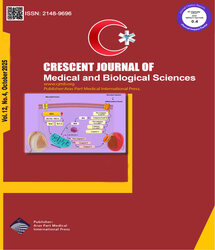

| Original Article | |
| Determination of Phylogenetic Groups of Escherichia Coli Isolated from Human Urine in Urmia City | |
| Shahin Baponi1, Afshin Taravati2, Mehdi Dilmagani3 | |
| 1Department of Microbiology, Urmia Branch, Islamic Azad University, Urmia, Iran 2Department of veterinary science, Rashat Branch, Islamic Azad University, Rasht, Iran 3Department of Cellular and Molecular Biology West Azerbaijan Veterinary Laboratory (WAVL), Urmia, Iran |
|
|
CJMB 2016; 3: 097-099 Viewed : 4060 times Downloaded : 6173 times. Keywords : Urinary tract infection, Escherichia coli, Phylogenetic typing, m-PCR |
|
| Full Text(PDF) | Related Articles | |
| Abstract | |
Objective: Escherichia coli is the member of Enterobacteriaceae family and is one of the most important and common species of Escherichia in medicine. Escherichia coli has high potential in creating different intestinal and extraintestinal diseases in human and animals. The goal of this research determination of phylogenetic groups of Escherichia Coli isolated from human urine in Urmia city. Materials and Methods: In the present research, 950 urine samples were studied from hospitalized patients in Urmia city. The urine sample were inoculated on MacCankey agar and blood agar and incubated at 37°C. Positive urine cultures was identified by standard laboratory methods involving morphological characteristics and biochemical tests. To determine the phylogenetic group, multiplex-PCR (m-PCR) was used. Primers used in this study could successfully amplify genes, including yjaA, chuA and TSPE4.C2 with 211, 279 and 152 bp, respectively. Results: Fifty samples were positive after culture and bacterial isolation. Fifteen of isolates belong to group A (30%), 6 belong to group B1 (12%), 20 belong to group B2 (40%) and 9 of them belong to group D (18%). Conclusion: The high number of bacteria in group B2 as extra intestinal pathogenic agent, indicative of having a care about choosing a treatment for such infections. |
Cite By, Google Scholar
Online Submission System
 CJMB ENDNOTE ® Style
CJMB ENDNOTE ® Style
 Tutorials
Tutorials
 Publication Charge
Medical and Biological Research Center
About Journal
Publication Charge
Medical and Biological Research Center
About Journal
Aras Part Medical International Press Editor-in-Chief
Arash Khaki
Deputy Editor
Zafer Akan

















